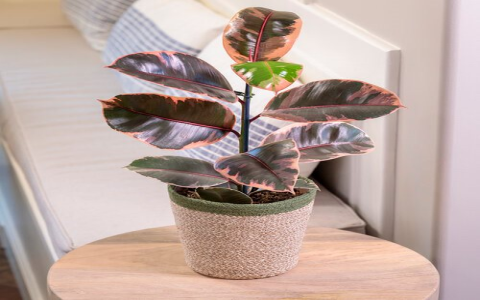Alright, so let’s talk about my rubber plant. I’ve had this fella for a good while, and honestly, it started to look a bit… well, sad. Not dying, but definitely not thriving, you know? The leaves were a bit droopy, not as glossy as they used to be. I figured it had to be something with its living conditions.
Figuring Out the Problem
My first thought went straight to light. My apartment isn’t exactly a sun-drenched paradise, especially in the spot I had it. I remembered hearing that rubber plants, they like it bright, but not, like, direct, scorching sun. Sort of like a nice, well-lit room, or even an office with those fluorescent lights on for most of the day. They mentioned something about an east-facing window being good for that gentle morning light, or keeping it a bit away from a south or west window to dodge that harsh afternoon sun. My setup? Definitely not hitting those marks.

So, I thought, if I can’t magically change my window situation, maybe I could supplement things a bit. That’s when the idea of a grow light popped into my head. I’d seen them around, people using them for all sorts of indoor plants.
Getting and Setting Up the Grow Light
I decided to give it a go. Didn’t get anything too complicated, just a basic LED grow light that I could clip onto a shelf or stand near the plant. The main thing was to provide that consistent light it was clearly missing.
Here’s what I did:
- First, I found a good spot for the plant where it wouldn’t be in the way, but where the grow light could also be positioned effectively.
- I positioned the light above the plant, not too close because I didn’t want to burn the leaves, but not too far either. It was a bit of trial and error, just eyeballing it to make sure the light spread over most of the foliage.
- Then, I got a simple timer. This was key. I remembered that tip about office lights needing to be on for at least eight hours. So, I set the timer for about 8-10 hours a day. I figured this would mimic a good, long day of indirect brightness.
- I made sure the light I picked wasn’t one of those super intense ones. The goal was to supplement, not to replicate the midday desert sun, because these plants prefer bright spots away from direct sunlight.
The Results – Did it Work?
I started this little experiment and then, well, I watched. For the first week, not much changed, to be honest. But I stuck with it. Kept the timer going, made sure the plant was still getting watered properly, all the usual stuff.
Then, around the second or third week, I started to notice a difference. The leaves definitely started to look perkier. They weren’t as droopy. Some of the newer leaves that came in seemed to have a better, richer color. It wasn’t a dramatic, overnight transformation, but a slow and steady improvement.
The plant just looked… healthier. More robust. It seemed to appreciate that consistent, bright environment I was trying to create with the grow light, especially since my natural light situation is pretty meh.
So, yeah, that was my journey with using a grow light for my rubber plant. It wasn’t super scientific, just me trying to give my plant a bit of a boost. And it seems to have worked out pretty well! If your place is a bit on the darker side, and your rubber plant is looking a bit lackluster, it’s definitely something to consider. Just give it that steady, indirect-style brightness for a good chunk of the day, and see what happens.






















